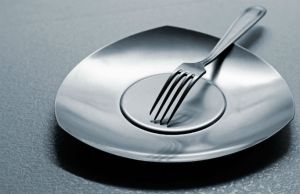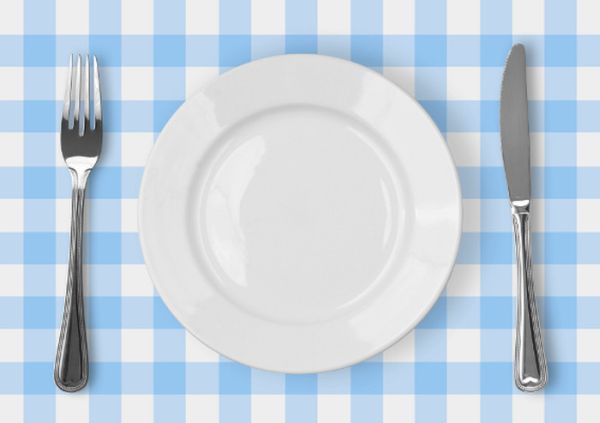Fasting 1 day per week for weight loss. If you are trying to lose weight through starvation and lose extra pounds, then maybe you should not torture yourself so radically? “How much water do you drink this day?” You allowed yourself green tea if my memory serves me right
Fasting is a very effective method not only for normalizing body weight, but also for solving many health problems. Proper refusal of food helps to cleanse the body, establish the work of all organs, which leads to effective weight loss, rejuvenation, general recovery. The advantage of fasting over any diet is that it does not just eliminate excess weight, but eliminates the causes of such. In this case, very high results are achieved, which remain for a long time.
Although Buddhism only emphasizes moderation in food intake, some of its followers also practice fasting. It is practiced and practiced among shamans of different cultures across the geographic map of the planet, especially as preparation for specific holidays throughout the year or to celebrate healing rituals or rituals of access to the “parallel world” to which they come in the “search for a vision” to collect reliable information that will help them in their healing actions for people of their tribe or clan.
It is also used and used in the rituals and initiatives of many cultures around the world. He then presented himself as an armed knight, entitled to carry weapons. Among the trophy churches three times a week they did not eat bread, water or salt, and many times a year they held long fasts. Bertolet, the Normans had a habit, before embarking on a campaign to fast, as they said, to meet death with a purified body and spirit. Ancient arias, according to Dr. Möller, had the habit of fasting one day a week.
Starvation for weight loss is a natural biological process during which a complete cleansing of the body occurs, protective and adaptive reactions are mobilized, a surge of strength appears. The dense subcutaneous fat layer and fat covering the internal organs together with accumulated toxins, slags, and decay products have a negative effect on all functions, significantly worsen health, and take away energy. As a result, shortness of breath, increased fatigue, chronic fatigue, various diseases of a physiological and psychoemotional nature develop.
Fasting was a common practice among the Hopi Indians of North America. The snake dance is a rite in which one post. At the time of the development of the party, each participant holds a snake between his teeth during the dance. The day after the ceremony, the snakes return to nature to spread the news that the Hopis live in harmony with the natural and spiritual world.
Fasting has also been practiced throughout history with the intention of preventing disaster, or as a way of fulfilling repentance for sin. Some Native American groups maintained tribal posts to prevent threatening disasters, while certain indigenous cultures of Mexico and the Incas maintained fasting to engage with their gods. Fasting was also practiced in Aztec ritual ceremonies.
When weight loss occurs through starvation, the body gets rid of everything superfluous, mobilizes its capabilities and independently eliminates most of the problems that led to the appearance of excess body weight.
Although refusal to eat is usually perceived as stress, therefore, the reaction in each case is very different and, in addition to obvious advantages, this method of losing weight has its drawbacks.
Abstinence from food was also part of the fertility rites in some primitive ceremonies. Many of these ceremonies were held at the spring and fall equinoxes and continued for centuries. Existing documents show that the practice of fasting or abstinence, whether partial or complete food, existed in Assyria, Babylon, China, Greece, India, Palestine, Persia, and Rome. On the other hand, the decline and disappearance of the Roman Empire coincided with its time of excess, including food. We know that they vomited excessively after eating to continue to eat.
Advantages and disadvantages
The absence or significant reduction in the amount of food consumed usually causes severe discomfort and malaise. This is a kind of protection of the body, the symptoms pass quickly enough if fasting is carried out correctly. And in this case, we can only talk about the benefits of such an event.
The benefits of fasting
The large excesses that are often found with food and drinks are always associated with the decline of society or culture, and this we must take into account these days. One thing is to enjoy the food, and the other is to bother it. From there we can also get tired of life. The evidence that we have about the early civilizations of Mesopotamia and Egypt indicates that a particular form of fasting is an important part of religious practice. It was a common practice among the ancient Persians. In Egypt, candidates for initiation into the secrets of Isis and Osiris were presented for a general seven-day abstinence.
In the body, freed from the need to digest incoming food, positive changes begin to occur:
- the load on all vital organs — the heart, liver, and kidneys — is reduced;
- feeling of overflow disappears gastrointestinal tractbloating, flatulence;
- skin condition improves, acne, pigmentation, vascular networks become less pronounced;
- all tissues, organs, systems are cleaned and improved;
- feelings, sensations, perception of the world are aggravated;
- hair and nails are strengthened;
- weight decreases, lightness appears in the body.
During a famine, human systems and organs contaminated by perennial deposits, slags, toxins return to their original state inherent in nature.
The dedication to the mysteries of Eleusis among the Greeks required the same abstinence, and the period of such sacred rituals ranged from seven to nine days. Socrates and Plato regularly went hungry for ten days in a row. To enter the Pythagorean school, a post was required. In the temple of Delphi, in ancient Greece, the priestess could not consult the oracle, except after being cleansed for twenty-four hours.
The Old Testament often mentions fasting and even the treatment that followed this practice. On the other hand, Buddha made many fasts on the way to his awakening. In the Celtic peoples, each candidate for a druid must undergo lengthy training, including fasting.
Long abstinence from food helps to cure many chronic diseases, eliminate the causes of fat deposits. Another big plus of fasting for weight loss is that with loss of weight and volume, in this case does not appear sagging skin and sagging muscles characteristic of any diet, if it is not combined with exercise. It should be borne in mind that only proper fasting can be beneficial, carried out in compliance with all recommendations, especially when it comes to long-term refusal of food. Otherwise, extremely negative consequences and side effects may occur.
In Manichaeism, an ancient religion that disappeared from the Western world at the beginning of the Middle Ages and took the name of its founder, the Persian sage Mani, students practiced weekly fasting. The early Christians associated fasting with repentance and purification. One of many examples is the example of Joel 2: 15: “Destroy the trumpet of Zion, proclaim the fast, proclaim the congregation.”
During the first two centuries of its existence, fasting was established among the first Christians as a voluntary preparation to accept the sacraments of the Eucharist, baptism and holy orders. Later, these posts became mandatory. After the Reformation, most Protestant churches were stored quickly, and in some cases became optional. The Orthodox Church supports fasting.
The harm of starvation
During a prolonged improper refusal of food, the body loses a large number of vital nutrients. Deficiency of vitamins, minerals, salts, amino acids, other important elements causes significant harm, as a result of which:
- there is weakness, headache, dizziness, especially during physical exertion, even hungry fainting is possible;
- immunity weakens, resistance decreases, viruses are easily picked up and colds cannot be cured for a long time;
- the appearance worsens - the skin begins to peel off, the hair becomes brittle, the nails peel off;
- ideal conditions are created for the development of diseases of the digestive system, there are problems with the gastrointestinal tract.
Often, hunger leads to psychophysical disorders, the most serious of which is anorexia.
In the early days of the Christian era, twenty-four hours were very common. Quickly from sunset one day to sunset the next. Persians, according to Herodotus, retained their vitality and strength by not making more than one meal per day and refraining from meat. Avicenna, a well-known physician and Arab philosopher of the Middle Ages, appointed his patients posts from 3 to 6 weeks.
Reville also says that the priests of ancient Mexico lived a harsh life and practiced lengthy fasts. Before all parties it is necessary to impose a more or less long post. His students were subjected to strict discipline with progressive fasting.
With anorexia, the stomach stops taking food, does not give signals that contribute to the appearance of hunger. This leads to a complete rejection of nutrition, severe depletion, irreversible changes in the body, often with a fatal outcome.
Thus, hunger, used for weight loss without thinking and uncontrollably, can become not just harmful, but dangerous for health and life. Only with strict adherence to instructions and recommendations, this method of losing weight can bring invaluable benefits.
Among the Jews, fasting was kept with a penitent and purifying meaning, each Yom Kippur, as it was thus prescribed by Moses; on this holy day, neither food nor drink is allowed. Also well known is the daytime fast which ends after sunset, performed by Muslims during the month of Ramadan. They launched an attack on Yom Kippur Day.
Eastern Jews call Yom Kippur "White Hunger", in contrast to Tishi B'Av, the "Black Bull", which is stored in memory of the destruction of the Temple. Yom Kippur or the Day of Atonement is the holiest day of the Jewish calendar. That day, fasting is so strict that you cannot even drink water. It is a day of reconciliation in which violations and a petition for God's forgiveness are recognized.
Types of fasting by type of restriction
Since there are many types of fasting, both in terms of degree of restriction and duration, separate recommendations have been developed for each of them on how to prepare for this process at home, how to start fasting, and how then to switch to a normal diet so as not to harm to your health. An especially tough and requiring strict observance view is dry fasting.
Among the Arabs - the period of Ramadan. The period in which the believers of this religion perform a partial and daily fast, which ends after sunset. The Qur'an paragraph says: Diet is a first-order remedy; the stomach is a vessel of disease; you will never have the health filling your stomach; Do not deplete yourself with food or drink; overeating is the father of all evil; The regime is the father of all remedies. When Muslims leave for Mecca, they observe three days of fasting during a seven-foot trip to return, supported by Muhammad’s commandment: “Fasting is health.”
Dry
The dry method of abstinence from food is the most difficult, since it involves the rejection of even water. V It must be carried out with extreme caution and carefully follow all recommendations.
Features
There are two types of dry hunger - soft and hard. Their methodology is exactly the same, but in the first case, you can take a shower, bath, rinse your mouth, brush your teeth, and in the second, any contact with water is prohibited. Also, in both cases there are no cleansing enemas, since the absence of external water prevents the absorption of toxins into the digestive tract.
Ramadan is the ninth month of the Islamic year, the holy month of fasting, and fasting this month is one of the five pillars of Islam. The other four are the profession of faith, prayer, alms and pilgrimage to Mecca. Since the Islamic calendar is lunar, it changes the date of Ramadan from one year to another. The bulk of Ramadan begins every day at dawn and ends as soon as the sun sets, at which time Muslims are forbidden to eat, drink or smoke. The day after the end of Ramadan is called the "Feast of Fault," and is celebrated with prayers and special celebrations.
The essence of losing weight on dry fasting is simple - the body in the absence of food and water is forced to rebuild as quickly as possible, starting to independently provide itself with nutrients and liquid from its reserves.
If this method is used for the first time, it is recommended to limit yourself to 24 hours. This day is advisable to spend outside the home, best in nature, to be away from temptations. It should also be borne in mind that even cooking by half reduces the effectiveness of the procedure, so it is advisable not to go into the kitchen at all.
The claimant is that the tegel among the Aztecs, a word that denotes the highest degree of nobility, made strict repentance during the year, which consisted of fasting, frequent outpouring of blood and the prohibition of all sexual intercourse, in addition to patient patience to prove his perseverance.
Repeated fasts are well known in the form of the famines committed by Mahatma Gandhi on his path of non-violence, Ahimsa, to free India from the British government through a peaceful revolution. He used the post as a "weapon" in his peaceful resistance and did not cooperate with the British government and turned out to be a real "peaceful warrior." Their posts were necessary to raise people's awareness and gain freedom and independence of India from the English government. But in addition to his pacifist ideas, Gandhi knew the beneficial effects of temporary abstinence from food on health.
The procedure should be carried out on one day of the week, for example, on Mondays. And only when the condition is brought to such a level that you will look forward to this day, enjoying the excess energy, then you can proceed to prolonged abstinence, gradually adding a few hours.
How to prepare
In short, fasting has been practiced for centuries in relation to ceremonies, rituals and ceremonies of religions that contemplate it to a greater or lesser extent. Therefore, while some celebrate fasting holidays, others fill their gut with banquets. We do not get out of the bank until everything that was arranged on the table disappears.
It seems to me that this is made of therapy. And the word therapist comes from Greek therapists, a servant. In fact, the therapist is not the one who heals, but the one who accompanies and cares while the healing is taking place. Among the doctors of Hippocrates, the main therapeutic resource was the Sejm, the "diary" set out in the "On Diet" treaties, which describes the characteristics, preparation and indications of food for both sick and healthy people. And the Diaat, according to them, is associated not only with swallowed food, but also with physical exercises, professional activities and social customs.
The preparatory phase for dry hunger is very important. 3 days before the procedure, you must completely switch to a vegetable diet, give up coffee, salt, sugar, alcohol. Best to use:
- fresh fruits, dried fruits;
- boiled vegetables;
- cereal cereals;
- nuts sprouted grains.
You also need to drink plenty of fluids - unsweetened juices, herbal teas, clean water.
The concept of diet in ancient Greece included not only food, but the whole regimen or lifestyle. In the strength of the disease, it is advisable to eat very weak food or the absolute suppression of all food. With intense diarrhea, taking a raw apple. In winter and spring you can eat more than in summer and autumn. When you have a fever, the best food is fruit juice. If a sick person is thinned enough due to a long illness, he does not need to eat too much to recover in advance, but he must do this with caution.
When the disease is not very important and develops in a favorable sense, the doctor should not use many remedies; it is better for the natural vitality to act, if possible, on its own. According to Erasistratus, the most important causes of painful symptoms would be an excess of food, its weakness and corruption. Recognizes the disease as an affected organ, and not, as was believed, an affect of humor.
Right exit
It is very important and correct to stop dry fasting. To do this, you must observe several rules:
- the first is a glass of chilled boiled water - slowly, in small sips with breaks (it is forbidden to drink any other water or liquid);
- then immediately take a cool shower or non-hot bath;
- further during the day it is allowed to eat, in small portions, dairy products, warm chicken or fish broth (without salt, bread, spices);
- on the second day, you can add dietary cereals or boiled vegetables to the diet, you can’t eat raw foods.
During this period, regular walks and airing of the room are useful.
He replaced the use of bloodletting, leg ligation, fasting, soft laxatives, diet, baths and gymnastic exercises. Among the Greeks, methodical, tried to cure starvation and dry or wet feeding. To treat the latter, the patient set and set strict diets with which he tried to change the general condition of the body. Aulo Cornelio Selso from the eclectic school, which classifies the signs of inflammation in the tumor, blush, heat and pain, the signs recognized to this day, lived by the year 30 after Jesus Christ, said in his imperishable work that there is healing power natural in human body.
Advantages and disadvantages
Almost immediately after the onset of dry fasting, positive changes in the body begin:
- everything alien is destroyed;
- adaptive abilities increase;
- all processes are activated, which leads to intensive expenditure of body fat;
- extra pounds go away gradually;
- there is a feeling of lightness;
- breathing becomes deep, calm;
- pressure normalizes;
- chronic fatigue passes;
- the feeling of heaviness in the stomach, symptoms of indigestion disappear.
If you strictly adhere to all the rules, you can significantly reduce body weight due to the fact that they will begin to be actively burned. body fat.
The harm from dry starvation can occur only if the method is used for too long or the rules for carrying out, preparation, and especially the way out of such abstinence are not observed. In addition, it requires enormous endurance and patience. But the results are achieved the highest and most pronounced.
Dry hunger for weight loss is the most severe and the only one of all such methods that is not recommended for longer than 1-2 days. But on its basis there is a more gentle way of fasting for weight loss - cascading.
Cascade
Cascading is the abstinence from food, which is carried out by alternating days of hunger with days of eating plant foods, while the number of those and other days gradually and evenly increases (cascade). But dry fasting is possible only in those cases when it lasts no more than 2 days. If this duration is exceeded, it is necessary to switch to water starvation.
Features
There are two types of cascading starvation - long and short. With a long alternation of days, it grows in the same order: 1 day is hungry, 1 day is plant, then 2 days are hungry, 2 are plant and so on until 5 days of hunger and 5 days of plant.
The compressed version is performed according to another scheme:
- 1 day - hungry, 2 days - plant;
- 2 - hungry, 3 - vegetable;
- 3 - hungry, 4 - vegetable;
- 4 - hungry, 5 - vegetable;
- 5 days of hunger are the final ones.
The first day of hunger is best made dry (in the hard version - absolutely without contact with water). If possible, then the next two days after the plant is also better to dry, while you can not wash and even brush your teeth. On the "edible" day, you must, on the contrary, drink plenty of water. Dinner - no later than 18:00.
Choosing one of the options, you must strictly follow the schedule, without changing anything. At the same time, the option of a long cascade is considered more suitable for beginners.
How to prepare
During the week before cascading fasting, it is recommended to switch to a raw food diet, including only vegetables and fruits in the diet. This will allow you to get used to such a diet, provide an easy transition to abstinence, and improve bowel function, preparing it for “dry” days.
Right exit
After a long cascading famine, which ends with a 5-day diet of plant foods, it is not necessary to follow special exit rules. It is enough just to stay on a healthy diet, gradually including a variety of dishes.
From the compressed cascade they exit according to a special scheme:
- drink cool boiled water first;
- take a shower or bath;
- after 2 hours, drink a glass of kefir;
- in an hour - a portion of chicken or fish broth.
Such nutrition on fermented milk products and low-fat broth must be observed for two days. Then it is allowed to gradually switch to the usual food.
Advantages and disadvantages
Cascading fasting has a number of advantages over other similar techniques that make it one of the most effective and safe methods of losing weight:
- weight loss is quite intense;
- after the period of weight loss is over, lost kilos are not returned;
- the presence of “eating” days makes hunger more tolerant, since the body experiences less stress, and the psyche adapts more easily to deprivation;
- high-quality cleansing from toxins, toxins, decay products;
- lightness, vigor, energy appears;
- aggressiveness, irritability disappears;
- the psychoemotional state improves.
During cascade starvation, the fight against extra pounds is carried out in two directions: days on the plant diet make up for the lack of nutrients and provide high-quality cleansing, and days of hunger contribute to intensive burning of fat reserves.
The body quickly responds to such a regimen and immediately begins to lose excess weight. At the same time, stress for him will be much less than with other types of hungry weight loss.
Since cascading refusal of food involves the obligatory bringing of the fasting period to 5 days, it can be quite difficult to maintain such a regimen. At the same time, it is impossible to stop halfway, since the results obtained do not live up to expectations, and the whole procedure will be in vain. If you can not stand such a long time without food, you can resort to a more gentle cyclic technique.
Cyclic
The method of abstinence from food according to the cyclic principle was developed by A. Voroshilov as a medical and health diet. Its basis is a food pause - a break between meals, which can last from one day to several weeks, repeating systematically or periodically.
- normalization of body weight;
- purification;
- health improvement;
- rejuvenation.
The essence of cyclic fasting for weight loss is that food pauses exclude the risk of returning kilograms lost during the diet, and the systematic and regularity of their observance ensures long-term preservation of the results.
The advantage of cyclic fasting over cascading is that the duration of a meal break can be adjusted independently without strictly adhering to the schedule.
- during a pause, regardless of its duration, do not eat anything, but you can drink water, unsweetened tea or coffee in unlimited quantities;
- do exercises, go to the bathhouse, sauna, lead an active lifestyle;
- perform all hygiene procedures.
When there is a strong feeling of hunger, characteristic of long pauses, the author of the technique recommends performing the exercise "Frog":
- place your palms on a chair;
- take a deep breath, maximally drawing in your stomach;
- hold your breath for 6-8 accounts;
- exhale by relaxing your stomach.
To suppress appetite, the exercise is performed 10 times.
How to prepare
Preparation for a food break according to Voroshilov requires two procedures in the afternoon, before the famine:
- 4 hours after dinner, blind sounding (tubing) is performed to clean the liver;
- then a laxative is taken to cleanse the intestines.
To make a tube, a warm heating pad is applied to the liver area, and then a solution of magnesium sulfate is drunk in small sips (2 tsp per glass warm water) To kill the unpleasant taste of the drink, you can drink each sip with water. After the procedure is completed, a boiled egg is eaten, and after a while light exercises are performed. Then the urge to the toilet should appear. After emptying, a laxative is taken. These procedures will fully prepare the digestive system for the upcoming famine.
Right exit
The basic rule is not to overeat. Best of all for the first day menu are eggs, lactic acid products, boiled fish. Meals should be three meals a day, without snacking. When there is a feeling of hunger, the exercise “Frog” is performed. For dinner, it is advisable to take 2 tbsp. l bran or fiber to normalize stool.
Advantages and disadvantages
Compliance with the cyclic methodology provides:
- good health during the period of refusal of food;
- lack of hunger and related symptoms (fresh breath, normal gastrointestinal tract);
- regular stool;
- controlled weight loss;
- a quick return to your usual diet.
At the same time, visible results are achieved quite quickly and comfortably:
- body weight is adjusted;
- chronic diseases are cured;
- strengthened immune defense;
- cleanses, rejuvenates the body;
- premature aging is prevented.
The best results can be achieved with a weekly abstinence from food, which is carried out monthly. After normalizing the weight to the desired indicator, the duration of the food break is reduced to 3-4 days or regular fasting days are held every week. Even a one-day break in food will have a positive effect on well-being, help cleanse the intestines, and make appetite manageable.
A one or two-day food break is completely harmless. But not everyone can withstand even such a short-term refusal of food. For those who can’t overcome the urge to eat at least something, a partial abstinence from food is better.
Partial
This type of hunger is the mildest and is considered the most suitable for those who first use this method of losing weight.
Partial fasting is a diet in which the daily diet is reduced to 200-300 kcal most often due to the exclusion of high-calorie foods from the menu.
Features
The most appropriate for this method will be the selection of healthy foods that, when consumed, occupy a large volume in the stomach. Fruits, vegetables, skim milk products, and cereals on water are best suited. The calorie content of the specified diet must be strictly observed, without increasing, but not reducing it.
TO best options partial refusal of food include:
- juice diet - the use of natural fresh juice (only vegetable or only fruit), best of all carrot, apple, orange;
- porridge diet - nutrition of porridge of one or several types, best of all buckwheat, rice, pearl barley, millet.
You can follow each of these diets for 1 day, but partial fasting according to this scheme gives the best results for cleansing and losing weight:
- 5-10 days of a diet;
- 5-10 days of recovery on a normal diet.
The number of diet and regular days should be the same. Repeating the course is allowed an unlimited number of times. Maximum efficiency is observed after 10 courses.
How to prepare
Preparation for partial hunger consists in cleansing the intestines with enemas or saline laxatives. For an enema, a weak solution of potassium permanganate is used. Since only the large intestine is cleaned, it is better to clean the entire digestive tract with the help of a laxative - magnesium sulfate (magnesia). For this, 30-80 g of powder is taken (depending on weight) on the eve of the diet.
Partial nutrition can be transferred without purification. But the effectiveness in this case will be much lower, and the sensations will be worse than after cleansing the intestines.
Right exit
It is necessary to come out of partial hunger gradually so as not to disrupt the digestive tract. It is best to do this with the help of a vegetable diet, so that the body in the process of recovery continues independent protein synthesis.
Advantages and disadvantages
During almost any diet, a slowdown in metabolism occurs, which significantly slows down weight loss. With partial starvation, the metabolic rate is maintained, since the body does not consider it necessary to switch to the "safe mode", but, on the contrary, it begins to burn body fat at an accelerated pace.
There are practically no disadvantages to this method of losing weight. But some options, such as a juice diet, may not be suitable for people with stomach problems.
Despite the fact that this type of weight loss allows the use of a small amount low calorie foods, many people carry it pretty hard. It is often difficult to stretch 300 kcal for a whole day. In such cases, a way can come to the rescue, in which the day is divided into two periods, in one of which you can eat, in the second - no. This is the so-called periodic fasting.
Periodic
This technique allows not only to lose weight, but also to strengthen health. It does not provide for strict restrictions and is considered as natural as possible for the body.
Periodic fasting is a diet consisting of two periods: eating and starvation. In this case, the main amount of time you need to starve.
Features
The most common schedule of such food is 16/8, that is, at first 16-hour fasting is observed, during which only non-nutritious drinks are allowed, and in the remaining 8 hours you can eat almost everything, but it’s better to use healthy foods. Similarly, the regime according to the scheme 14/10 is observed, but it will be less effective.
A feature of this technique is the rejection of breakfast. At the same time, everyone selects a convenient schedule for himself. The first meal can be at 12 o’clock in the afternoon, and you can have dinner at 8 o’clock in the evening, the main thing is that the break in food is 16 hours. The only condition is that you need to eat 4 hours before bedtime so as not to burden the digestive system.
How to prepare
No preparatory procedures are required.
Right exit
There is no way out, as such. The main thing is not to overeat during the food window and adhere to a balanced diet.
Advantages and disadvantages
Among the main advantages of losing weight on the periodic system Nutrition include:
- loss of excess fat while preserving muscle tissue;
- cleansing the body of toxins, damaged and dead cells;
- increase in the production of growth hormone tens of times, which is one of the main indicators of the effectiveness of weight loss;
- normalization of the synthesis of the hormone ghrelin, which is responsible for the feeling of hunger and allows you to control appetite.
Most of these processes are due to the fact that during the period of refusal of food:
- insulin levels drop;
- hormones are produced that prevent the deposition of fat;
- existing fat reserves are split for energy, which leads to its active use and weight loss.
In addition to normalizing body weight, this diet has several advantages:
- activation of all metabolic processes;
- normalization of the hormonal background;
- elimination of inflammatory processes;
- lowering blood pressure;
- regulation of water-salt balance.
The relative disadvantage of this method of losing weight is the lack of a quick result - kilograms will be lost, but slowly. If you need an instant effect, it is better to use fasting on the water.
On the water
The principle of water hunger involves a complete rejection of food. The entire period is allowed to use only clean water, but this must be done with knowledge.
Features
Fasting on water is recommended for no more than 3 days, although those who practice such healing methods can live on water for much longer. For weight loss, 24-72 hours of a water diet will be enough, which is carried out in compliance with several rules:
- these days it is only allowed to drink water (2-3 liters per day) and rest;
- walks in the fresh air without active physical activity are allowed;
- periodically rinse your mouth, brush your teeth and tongue;
- it is forbidden to drink anything other than water, even herbal tea, medications and everything else, otherwise it may be harmful to health;
- you need to drink water through a tube in small sips;
- it is very useful to take a warm bath (hot can cause fainting, too cold - reduce immunity);
- every evening you need to put a cleansing enema.
Usually the process is accompanied by unpleasant symptoms, which are completely normal, and therefore should not cause concern. The main thing is to comply with all the above rules, as well as to properly prepare and competently get out of it.
How to prepare
Preparing for fasting on the water is carried out according to this scheme:
- in a week you need to switch to a vegetable diet in compliance with the principles healthy eating, as well as increase the amount of water drunk per day;
- on the eve of the first water day, the diet is halved so as not to overload the digestive tract;
- an enema is put in the evening to cleanse the intestines.
There is nothing complicated in preparation for spending one or several days on the water, but even these simple recommendations require careful observance.
Right exit
The best results of water fasting are achieved only in combination with proper recovery. Refusal of food allows you to get rid of extra pounds, and further nutrition should ensure weight consolidation. A competent exit from such a diet is as follows:
- its duration should correspond to the duration of fasting;
- it is forbidden to consume sugar, salt, animal products, bakery products, fats, alcohol;
- it is best to follow a plant diet;
- you can not refuse cleansing enemas (every other day).
During this period, it is advisable to take walks in the fresh air and you can gradually begin to exercise.
Advantages and disadvantages
Starvation on water brings tangible benefits to the body:
- rapid weight loss occurs;
- food dependence disappears;
- all organs are healed, chronic diseases are cured;
- intestines, blood, lymph, joints, tissues are cleaned;
- the causes of night snoring are eliminated;
- the body is rejuvenated, the skin, nails and hair are restored.
The positive results of regular one-day fastings on the water tend to accumulate, but become noticeable after the first exercise.
After 2-3 months of weekly fasting days, you can easily switch to prolonged water starvation. They can also become the basis for more organized and effective interval hunger strikes.
Interval
This technique was developed by the Canadian B. Pilon on the basis of the principle of calorie deficiency. In fact, this is abstinence from food, calculated for a week according to the scheme 6/1 or 5/2. Adhering to such a schedule, you need to completely refuse food for 24 hours once or twice in 7 days.
Features
The method captivates with its efficiency, simplicity and minimum restrictions. In those days when it is allowed to eat, you can not change your diet, eat any food, not count calories, have dinner at night, buy fast food.
The main principle of interval fasting: to lose weight, you need to reduce not the number of calories, but the number of meals.
The longer the food breaks, the less insulin will be released, which leads to cell recovery, weight loss and recovery. The main thing is to determine for yourself 1, and preferably 2 days a week, when you need to give up all meals, except dinner. Such a nutrition schedule will ensure full saturation of the body with all the necessary substances, and preparing and getting out of such a mild fasting, which takes only 24 or 48 hours a week, will not be associated with any difficulties.
How to prepare
The most important thing is to make a decision and take action.
Right exit
There is no special way out, since the whole process goes as naturally as possible.
Advantages and disadvantages
The main advantage of such abstinence is a minimum of restrictions and a short duration of hunger. In this case, the weight is first easily lost, and then easily held. This result cannot be achieved by any other method of losing weight.
Interval (intermittent) fasting is a kind of "reset" for the body, which is not so much important for weight loss as for recovery. This technique can help cure diabetes, cardiovascular disease, and even cancer. This is due to the fact that the rejection of food by the interval technique starts the process of cell purification, which leads to the restoration of the health laid down by nature.
Clinical testing of the results of interval nutrition, conducted by a group of scientists from Israel, showed a number of advantages:
- the process does not slow down the metabolism, providing relief even from “stubborn” extra pounds;
- by reducing the number of calories consumed, an energy deficit is created that promotes weight loss;
- there is no need to break the usual diet - just skip breakfast and lunch 2 days a week.
With this mode, the calorie content of the weekly diet is reduced by 3500 kcal, which contributes to the breakdown of 500 g of body fat. In fact, interval nutrition cannot be called starvation or diet. This is a way of life that normalizes body weight, provides the necessary protein for the muscles and all other useful substances.
In addition to the rules and recommendations for fasting indicated in each description, there are general rules entry and exit from this process.
General rules
If you have never been hungry, you should start with 24-hour abstinence once a week. When the procedure becomes habitual, you can increase its duration. It is extremely important to observe some points:
- correct entry into the process;
- strict adherence to the rules;
- competent exit.
At first, the weight usually leaves as intensively as possible, and losses can be up to 2 kg per day.
Correct entry
Starvation without preparation should not begin. If there are no special recommendations, it will be most useful to switch to light nutrition in a few days, excluding animal products from the diet, including dairy products, sweet pastries, too fatty or other high-calorie foods. An ideal menu would be fresh vegetables and fruits, juices, cereals. You need to eat in small portions 5 times a day, and also gradually increase the amount of water drunk per day to 2 liters.
During the preparation period it is necessary to adhere to the following rules:
- you can’t eat up for the future, so as not to aggravate stress for the body, not to complicate the process of cleansing from toxins, toxic substances, food debris;
- in the morning of the first hungry day it is necessary to make a cleansing enema of 1.5 liters of warm water with 1 tbsp. l salts;
- the psychological attitude is very important, otherwise it will be impossible to achieve success.
You need to know and remember about the possibility of discomfort, a strong feeling of hunger, unpleasant symptoms - nausea, bad breath, fatigue, irritability. If such manifestations are too severe for you, you should choose the most mild by restriction and the shortest by duration from all types of fasting.
Options for overcoming starvation
All types of fasting described above, except those that must be performed with strict adherence to the schedule, can have different durations. Along with the strictness of the limitations, this factor is fundamental for determining the effectiveness of each technique. In addition, the duration of the rejection of good nutrition significantly affects the need for proper exit to return to a normal diet. Therefore, there are special techniques that are recommended to be used.
If we talk about the dependence of the way out of starvation on its duration, then it is necessary to distinguish several types:
- one-day - often used as a fasting day and usually consists in a complete refusal of food for one day;
- three-day - brings more benefits for losing weight than one-day, with the power of almost everyone;
- weekly (seven-day) - is directed, rather, to cleanse and improve than to lose weight, while weight loss is the result of the normalization of all body functions;
- long-term - this is a refusal of food for a period of ten days or more, which can only be carried out under the supervision of doctors.
Depending on the duration of fasting, a suitable option is chosen to return to normal nutrition.
There are several basic principles for overcoming any abstinence from food:
- you need to introduce habitual food into the diet gradually;
- it is necessary to observe the principles of a healthy diet;
- do not overload the digestive system with heavy food;
- servings should be small, meals - fractional;
- the duration of the exit period should be equal to the period of hunger.
One of the most acceptable ways is to go out on juices.
Using juice
Immediately after removing the dietary restrictions, it is recommended to consume freshly squeezed juices. Power should be built according to the following scheme:
- 1-2 days - juices, half diluted with water, in small portions, but often;
- 3-4 days - undiluted juices, vegetables, fruits, broths in small quantities, so as not to overload the stomach;
- 5-7 days - cereal cereals, lactic acid products, nuts.
Yields on juices usually take one week, but if fasting lasted longer, then the diet should be extended for 5–7 days by the required number of days. After the recovery period, you must switch to a proper balanced diet.
From one day fasting
For 1 day of hunger in the body there are no cardinal changes, but after a fasting day you can not immediately pounce on food or eat heavy food. In everything you need to observe measure and a reasonable approach.
After one day fasting:
- in the morning you should drink a glass of clean water;
- after 20 minutes - eat a vegetable salad;
- after 1 hour - a small portion of steamed vegetables;
- further - eat plant foods throughout the day;
- for dinner - drink herbal tea.
On the second day there are no special restrictions, but the diet should be made up of vegetable dishes, lactic acid products, light cereals. From the third day you can return to the usual diet.
Of the three day
Three days spent without food is a serious stress for the body, so you need to get it out of this state correctly. During this time, there is a slowdown in the digestive and metabolic processes, which must be gradually dispersed.
To do this, you must follow the same diet as after one-day fasting, but within 3 days.
From the fourth day it is allowed to introduce cereals and lactic acid products into the diet, and from the fifth - go to the usual diet.
From weekly
From weekly fasting, you need to get out within 7 days. During this period of time, you can restore all the functions of the digestive system, consolidate the result and even continue the process of losing weight, getting rid of a few extra pounds.
- 1 day - pure water in any quantity, 1 liter of any juice diluted in half with water;
- 2 day - 0.5 l of undiluted juice before dinner, until the end of the day - mashed vegetables in small portions, not more than 0.5 l;
- 3 day - mashed fruit or vegetables, small portions of porridge on the water without any additives;
- 4 day - vegetable soup, boiled vegetables, fresh fruits;
- 5-6 day - lactic acid products are added to the diet of the previous day;
- 7 day - you can add eggs;
- From day 8, fish, lean meat and other healthy foods are allowed in small portions.
From long
Long abstinence from food is an absolute restructuring of the body, so you need to get out of it very gradually, carefully and for a long time. Here the diet is divided into weeks.
First week
Every day you need to drink 1 liter of any freshly squeezed juice diluted with water in a ratio of 1: 2. They need to be cooked without pulp, to drink half a glass in small sips. Carrot, tomato, orange or apple juice is best suited; beet and grape juice is not recommended due to its high sugar content.
Second week
They drink the same juices, in the same quantity, according to a similar pattern, but already undiluted.
You can also cook them with pulp, without straining.
Third week
In addition to juice, you can add to the daily diet:
- a portion of buckwheat porridge;
- steamed vegetables with rice;
- fruits vegetables.
When cooking, you can not add butter, sugar, salt. You need to eat in small portions so that there is a slight feeling of hunger. From the fourth week, you can gradually return to normal nutrition, but it must be healthy and balanced.
If you are able to withstand all stages of fasting without violating a single rule, the reward will be a slender figure, a beautiful body, health and energy.
Starvation is not an easy way, but no other method of losing weight gives such a pronounced and lasting result. On the other hand, no diet has such severe restrictions on use, contraindications and side effects.
Side effects and contraindications
During fasting, they are often observed side effects. Most often they are manifested by the following symptoms:
- the first day - physical weakness, weak sleep;
- 3-4 days - dizziness, darkening in the eyes, slight nausea, heartburn, belching.
Such conditions are quite common and are easily eliminated by auto-training or meditation. More serious complications may occur if there are contraindications.
You can not starve people in the presence of the following health problems:
- exhaustion of the body;
- disorders of the cardiovascular, nervous system;
- kidney disease, gastrointestinal tract;
- diabetes;
- tuberculosis;
- oncology, cirrhosis.
Often fasting is used as a method of treating almost any disease, but it is strictly forbidden to use it on your own in such cases - you can resort to such cardinal methods only by order and under the strict supervision of doctors.
In the absence of contraindications, you can safely proceed, but start with the lightest short-term techniques. It should be borne in mind that their effectiveness depends not only on the severity of the limitations and duration of the process, but also on the individual characteristics of the body.
Efficiency
In most cases, abstinence from food is used to normalize body weight. As a result of such a technique, on average, you can lose:
- for 1 day - from 1 to 3 kg;
- 5-7 days - 7-10 kg;
- for 10-14 days - 10-12 kg;
- the following days - 1 kg every 3 days.
All these indicators can vary depending on the main parameters of a particular person:
- age - in youth, metabolism is more active, so kilograms are lost much faster;
- physique (initial body weight) - the more excess weight, the sooner it goes away, mainly due to the loss of fluid accumulated in the tissues, as well as due to the greater need for energy;
- the experience of losing weight - for beginners, kilograms go away more actively than those who regularly cleanse, because the body gets used to it over time, quickly switches to internal nutrition, saves energy more economically;
- physical activity - during fasting, it should be minimal, since the principle "the more you do it, the sooner you lose weight," does not apply. This is due to the fact that during movement, more oxygen is consumed, which is then used by the body as food;
- health - the more problems with it, the sooner weight loss is going on, since an absolutely healthy body quickly adapts to new conditions, and a weakened person expends more energy to adapt;
- additional procedures - people who during the period of refusal of food do anti-cellulite massage, take baths, put cleansing enemas, walk in the fresh air, visit a bath house, do breathing exercises, much faster get rid of extra pounds;
- the right way out - even the strongest effect of fasting will not make sense if it is wrong to get out of this process.
In order to lose weight and maintain good physical shape - you need to completely change your attitude to food, develop a culture of nutrition, make healthy diet way of life. But just starvation can be an excellent launching pad for starting a new life in a healthy, slender body.
Fasting is one of the most controversial topics in nutrition. He has both his ardent supporters who refer to authorities like Paul Breguet, and opponents.
Some consider starvation as a way to improve the body and longevity, while others consider it unnatural for a person.
The benefits of fasting
- When fasting, the gastrointestinal tract rests.
In the entire history of mankind there has not yet been such an abundance of food and affordable food, as it is today in civilized countries.
For many centuries, people had to try pretty hard to get food, whether by hunting, by farming, associated with hard physical labor. And now, the only effort required is to get to the refrigerator or the store.
Because of what the digestive system is experiencing excessive stress. It is useful to give her a rest from time to time.
During this period, the digestive system will rest and use the released energy to recover. - Fasting helps cure diseases. It has been proven that fasting contributes to the treatment of diseases such as allergies, neuroses, hormonal imbalances, and cardiovascular diseases.
When fasting, the growth of tumors slows down, there have been cases of cure for cancer. And with diseases such as a cold or SARS, you just need to connect the fasting process, as the symptoms subside and the healing process takes only a couple of days. - Fasting prolongs life. The same Paul Breg died at the age of 81, although doctors from his youth made diagnoses and made the most unfavorable predictions regarding his health.
It was a set of measures, which included therapeutic starvation, that helped him gain health and live a long active life, look much younger than his age at an advanced age. Studies in rat laboratories also confirmed that animals that had been systematically deprived of food for some time lived longer than their relatives who did not have food restrictions.
The harm of starvation

ABOUT medical starvation for prophylaxis according to Paul Bragg's method can be found in the video.
How to fast properly, to lose weight, and with health benefits

The main rule of preparation for the process - the entry period should take as much time as the process itself or at least half. 
Preparation consists in reducing the amount of food - the receptions themselves do not need to be reduced, it is enough to reduce the volume of servings. It is advisable to switch during the entrance to plant foods, juices, let’s say kefir, but low-fat. Other animal products, fatty and protein foods should be discarded.
If everything is done correctly, the process will be easier, without disruption, and there will be no problems with appetite and digestive system after.
The rules of one day fasting
One-day fasting is most beneficial for the body and does not pose a health hazard. At the same time, one day is enough for the digestive organs to rest, and the intestinal microflora will improve.
All putrefactive microflora perishes per day, while the beneficial flora of sour-milk fermentation is preserved. It is easier to tolerate, even in comparison with a low-calorie diet, when drinking enough water, there is no feeling of hunger.
General rules:
- To prepare for a daily refusal of food, you must follow all the rules for entering fasting: refuse heavy foods in advance, do not overeat, drink more water, plan this process for a day off. To enhance the effect on the first day, it is useful to make a cleansing enema.
- You should try to spend a lot of time in the fresh air, water procedures are shown.
- Weakness, mild dizziness, headache, bad mood, bad smell from the mouth and plaque formation in the language. These discomforts decrease or disappear if you practice fasting regularly.
- Recommended duration is 24-27 hours.
Improving your well-being and a surge of energy and strength after exiting will be noticeable even after the first such experience, regular repetition gives a noticeable healing effect.
Three-day fasting
A three-day refusal of food is already more stress for the body than a one-day one, it requires careful preparation and compliance with all recommendations for entry and exit. It is better not to start without having tried to start several refusals of food for a period of one day.
Practitioners also note the healing effect, improving the skin condition, increasing immunity - such starvation contributes to the disappearance of all the symptoms of a cold or SARS.
There are successful examples of getting rid of alcohol, nicotine and even drug addiction after three days of practice.
For three days, changes in the functioning of the gastrointestinal tract occur, digestive processes slow down, the body prepares for the transition to the so-called internal nutrition, and the process of splitting up its own fat is launched.

In general, this is not the best time for refusing food; it is used, as a rule, to prepare for a longer weekly process.
The rules of three-day fasting:
- Preparation is very important. For a week, the rejection of harmful and heavy food, alcohol is recommended.
For 1.5-3 days, switching to plant food, reducing portions, began to make a cleansing enema on the day. - Unpleasant symptoms such as headache, dizziness are more likely. Short-term attacks of hunger are possible.
- Drink plenty of water and take a shower more often than usual.
- Weight loss in three days can be several kg, however, half of them return the day after release, in order to maintain the effect it is important to continue to go out smoothly and not overeat.
- If fasting is very difficult, you can get out of fasting earlier, you should listen to your feelings. Better go out and try again later.
- A symptom that says that you need to immediately stop fasting is strongly clouded or very dark colored urine.
Weekly fasting
For seven days without food, the body completely switches to internal nutrition. It is during this period that the so-called acidotic crisis sets in, characterized by the smell of acetone from the mouth.
This type of fasting is used in medicinal purposes, since during this time the destruction of diseased tissues occurs, the body's ability to regenerate increases.
Rules for weekly fasting:
- Preparation begins in at least 2 weeks. It is necessary to reduce the amount of animal products in the diet, exclude alcohol, convenience foods, harmful food additives, preservatives. Do not overeat.

- The day before the start, meat and animal products should be completely abandoned.
- Fasting for seven days is best planned for a vacation, and preferably for the summer or autumn.
- In addition to cleansing the intestines, before starvation with an enema, it is recommended to clean the liver in advance.
- Headaches, nausea, dizziness, mood swings are characteristic for the first five days. After the onset of the acidotic crisis, all practitioners observe improvement in well-being, mood, burst of energy and strength.
- Sometimes an acidotic crisis occurs only on the seventh day or later. In this case, immediately stopping fasting is not recommended.
It should be extended for another 2-3 days.
How not to break loose during fasting
Of course, it’s hard to starve. Especially when it comes to the practice of more than one day.
In order not to break, it is important to remember the motivation that prompted starvation. It is useful to keep in mind the idea of \u200b\u200bthe benefits of practice and the positive effects on health.
Not feeling hungry will help drinking water in large quantities. During the cold season, you can drink water warm.
Frequent change of activity promotes switching. Walking, reading, background music will help occupy thoughts with something other than food.

It is important not to allow overwork, with the slightest fatigue, go to bed and rest.
The exit from starvation should be taken as seriously as the entrance to it and no less time should be devoted.
With one-day fasting, it is better to plan an exit for the evening. At the first meal, eat a small amount of vegetables or fruits, a vegetable salad with olive or linseed oil or stewed vegetables.
Until the evening of the next day, try not to eat meat and dairy products, observe a vegetable diet, drink plenty of clean water. After getting out of starvation, it is important to try not to overeat.
Only juices, fruits, vegetables, can be stewed. It is advisable to survive on plant nutrition a week after practice.
From the seven-day period without food, the output is the longest and most responsible. During the first day, only juices are shown, on the second day you can already fry fruits and vegetables.
Bread, soups, cereals are introduced into the menu no earlier than 3-4 days of release, and protein food and nuts only after a week. Then, for at least another week, adhere to the milk-vegetable diet and the principles of fractional nutrition in small portions.
Contraindications
Fasting is a serious experiment with health, so use this method carefully and approach it consciously.
Starving for longer than a day for therapeutic purposes is better under the supervision of specialists; there are special clinics.
It is categorically contraindicated in women starving during pregnancy and during lactation. It is not recommended for muscle atrophy, renal failure, hepatitis and cirrhosis, heart failure.
Fasting can be useful for the body, if you treat it responsibly, weighing the pros and cons, choose the right time for refusing food and follow the recommendations.
You can learn about the experience of seven-day fasting on the water from the video.
In contact with






